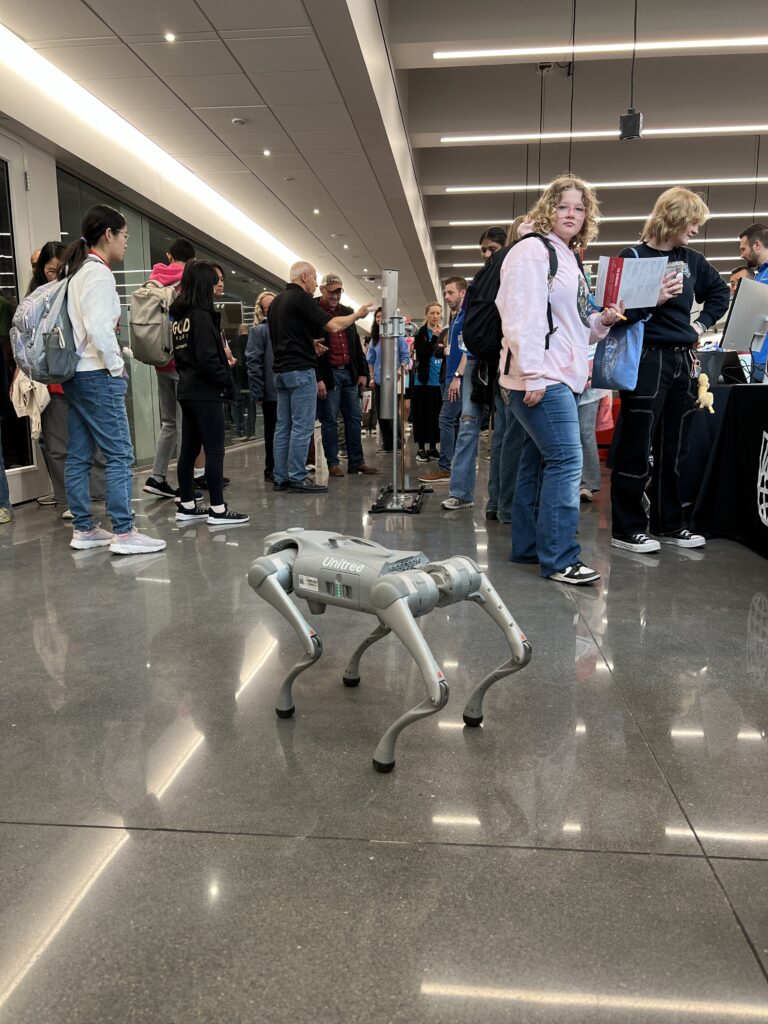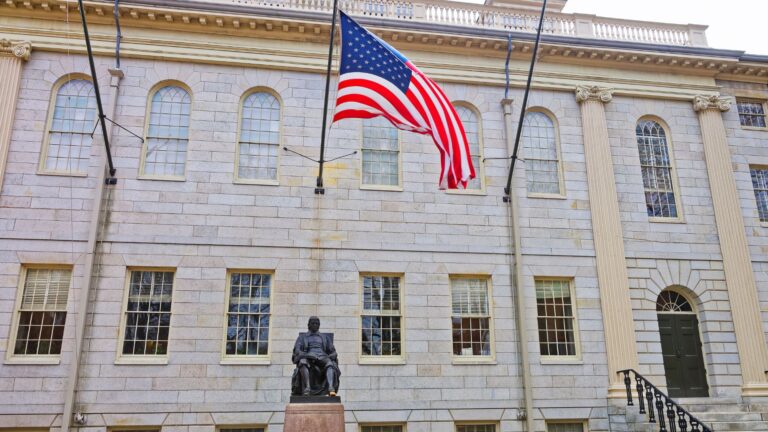Last Updated on June 4, 2025 by Noel Kim
Middle school doesn’t always get the respect it deserves. It’s often treated as a waiting room before “real” education begins — a phase marked by mood swings, social drama, and awkward transitions. But what if we’ve been underestimating this stage all along?
In my former life as an eighth-grade drama teacher in Chicago, the “leader” wasn’t the student who raised her hand first or memorized lines fastest. It was the kid who quietly helped others rehearse, who stayed late to adjust the props, and who showed up prepared — week after week. No badge, no title — just presence.
At InGenius Prep, we’ve coached thousands of students into the world’s most competitive universities. And over and over again, we’ve seen that real success doesn’t begin in junior year. It begins earlier — when students start practicing initiative, communication, consistency, and contribution in ways that feel authentic to them.
As our CEO Joel Butterly puts it:
“We start working with students in middle school not because it’s early — but because it’s the right time to start building the story that will define who they are.”
So what makes this moment so powerful? Let’s start with the science.
The Adolescent Brain: Timing Is Everything
There’s a reason adolescence is called a “second critical period” of brain development. Between ages 11 and 14, the prefrontal cortex — responsible for planning, emotional regulation, and goal setting — is undergoing dramatic growth. At the same time, synaptic pruning and myelination are making the brain’s most-used pathways stronger and more efficient.
In short: what gets practiced, gets wired.
According to Laurence Steinberg, a leading voice on adolescent development:
“The capacity for self-regulation — managing emotions, planning, setting goals — depends on brain systems that are very much still under construction in adolescence.”
(Age of Opportunity, p. 65)
And here’s the kicker: the brain’s reward system matures earlier than its control system. That’s why middle schoolers seek novelty, risk, and validation — long before they have the full ability to self-regulate.
It’s not about eliminating risk. It’s about channeling it — by offering students challenge, structure, and real responsibility.
Lisa Damour on Stress, Struggle, and Growth
Parents often worry about the emotional intensity of middle school — the tears, the pushback, the turbulence. But psychologist Dr. Lisa Damour encourages us to rethink that discomfort:
“Adolescents grow in response to stress — not in the absence of it. What they need isn’t less challenge; it’s more support to face it.”
(The Emotional Lives of Teenagers, p. 11)
That doesn’t mean overwhelming them. It means walking beside them. Offering mentorship instead of micromanagement. Providing scaffolding, not scripts.
“Much of what looks like misbehavior in adolescence is actually the byproduct of development. Independence isn’t rebellion — it’s progress.”
(Untangled, p. 88)
When your child starts pulling away, it’s not a red flag. It’s an invitation: coach them, don’t control them.
The Middle School Slump: A Real (But Solvable) Challenge
According to Gallup, middle school marks the steepest drop in student engagement across all grade levels. Between grades 5 and 8, the percentage of students who feel engaged in school plummets from 74% to just 33%.
Academic confidence drops, too.
Only 19% of middle schoolers feel recognized for their efforts (Gallup, 2023).
And 42% report decreased belief in their own academic ability (APA, 2022).
The good news? This slump is preventable.
What makes the difference is active mentorship, structured challenge, and identity-building — not passive assignments or GPA obsession.
The 4 Cs: Traits That Shape Future Leaders
Top colleges aren’t just looking for high GPAs. They’re seeking students who demonstrate:
- Curiosity
- Consistency
- Communication
- Contribution
Here’s what those look like in middle school — and why they matter:
Curiosity
Curious students don’t just memorize facts — they ask why. They follow their hunches. They start passion projects.
Harvard’s Richard Weissbourd calls curiosity a “gateway skill” that fuels motivation and grit. Susan Engel’s research shows that early curiosity is a strong predictor of long-term academic success.
Consistency
Talent gets the spotlight — but habits win the long game.
Angela Duckworth’s research on grit shows that long-term success is built on perseverance. And Barry Zimmerman’s studies confirm that students who manage their time and track their progress consistently outperform their peers — regardless of IQ.
Communication
Whether it’s asking for help, giving peer feedback, or presenting their ideas, students who learn to communicate early are better prepared for academic life, leadership, and collaboration.
David Yeager and Greg Walton’s work on academic belonging reveals that students who express themselves clearly — and feel heard — are more likely to succeed.
Contribution
Students need to see themselves as part of something bigger.
Richard Ryan and Edward Deci’s Self-Determination Theory shows that motivation is fueled by purpose, autonomy, and connection.
That’s why we coach middle schoolers not just to lead, but to contribute: to support a peer, serve a group, and show up when it counts.
What Makes a Strong High Schooler (and Applicant)?
When admissions officers read applications, they’re looking for more than scores and titles. They want students who:
- Take initiative
- Show emotional intelligence
- Follow through
- Think creatively
- Communicate clearly
- Demonstrate purpose
And these traits? They don’t start in 11th grade. They’re shaped long before — often in middle school, when the brain and identity are still in formation.
Consider this:
- 97% of Yale’s Class of 2028 were in the top 10% of their high school class
- 96% of Dartmouth’s Class of 2029 achieved the same top-tier rank
Reaching that level of excellence doesn’t happen by accident. It starts with strong habits — curiosity, reflection, resilience — all of which can be practiced in middle school and mastered by high school.
From my own experience teaching in Chicago, Atlanta, Charlotte, New York City, and Taipei, I can tell you: the students who stand out later are the ones who develop self-awareness early. They learn to manage emotions, support others, and reflect on what matters.
How the Young Leaders Program Works
The InGenius Young Leaders Program is built for this developmental window. It combines real-world project work with personal mentorship to meet students where they are — and stretch them.
Each student is paired with a mentor (often a former admissions officer or coach) who guides them through:
- Communication and public speaking
- Long-term project design
- Collaboration and feedback
- Strategic storytelling and identity-building
Students leave with more than a résumé. They leave with a sense of purpose — and a portfolio of real work that reflects who they’re becoming.
Programs are available in 12- or 24-week formats with rolling admission.
Does It Work? The Results Say Yes.
Students in our programs are up to 10x more likely to be admitted to Top 20 colleges.
Here’s how our students’ acceptance rates compare:
| University | InGenius Rate | National Rate |
| MIT | 21.28% | 3.96% |
| Harvard | 14.58% | 3.40% |
| UChicago | 27.78% | 5.44% |
But the impact goes far beyond numbers:
“My child transformed from shy to a confident speaker.” — Parent of a 7th grader
“The program ignited a passion for leadership in my daughter.” — Parent of an 8th grader
“Thanks to InGenius Prep, my son was accepted into his dream university.” — Parent of a senior
From Rohan, a student who launched a sustainability project:
“You don’t just learn about leadership — you actually do something. And that’s what makes it stick.”
Want to Dive Deeper?
Here’s where to explore the research behind this work:
- Brainstorm – Daniel J. Siegel
- Untangled – Lisa Damour
- Grit – Angela Duckworth
- Mindset – Carol Dweck
- Age of Opportunity – Laurence Steinberg
- Drive – Daniel Pink
Where to Begin
Whether or not you work with us, I hope you leave with this: middle school isn’t a phase to survive. It’s a launchpad. A time to coach identity, not just manage behavior.
So instead of asking:
“Is my child ready for leadership?”
Consider asking:
“What small step can we take today to help them grow into it?”
At InGenius, we’re not looking for perfect kids. We’re looking for curious, thoughtful, still-growing kids — and giving them the guidance to rise.
Book a free consultation to learn whether the Young Leaders Program is right for your child.
Because leadership isn’t something you wait to practice.
It’s something you build — day by day.


